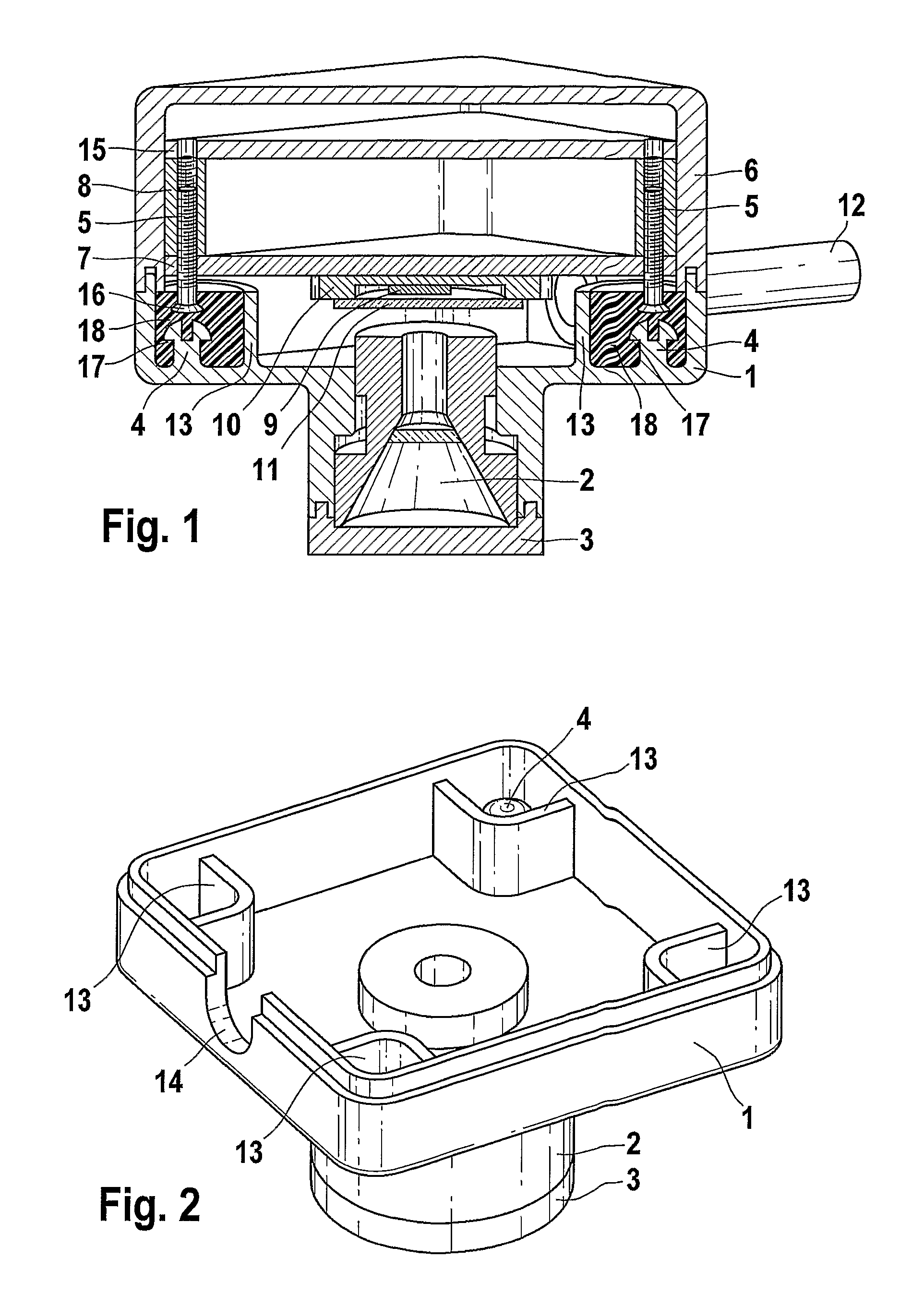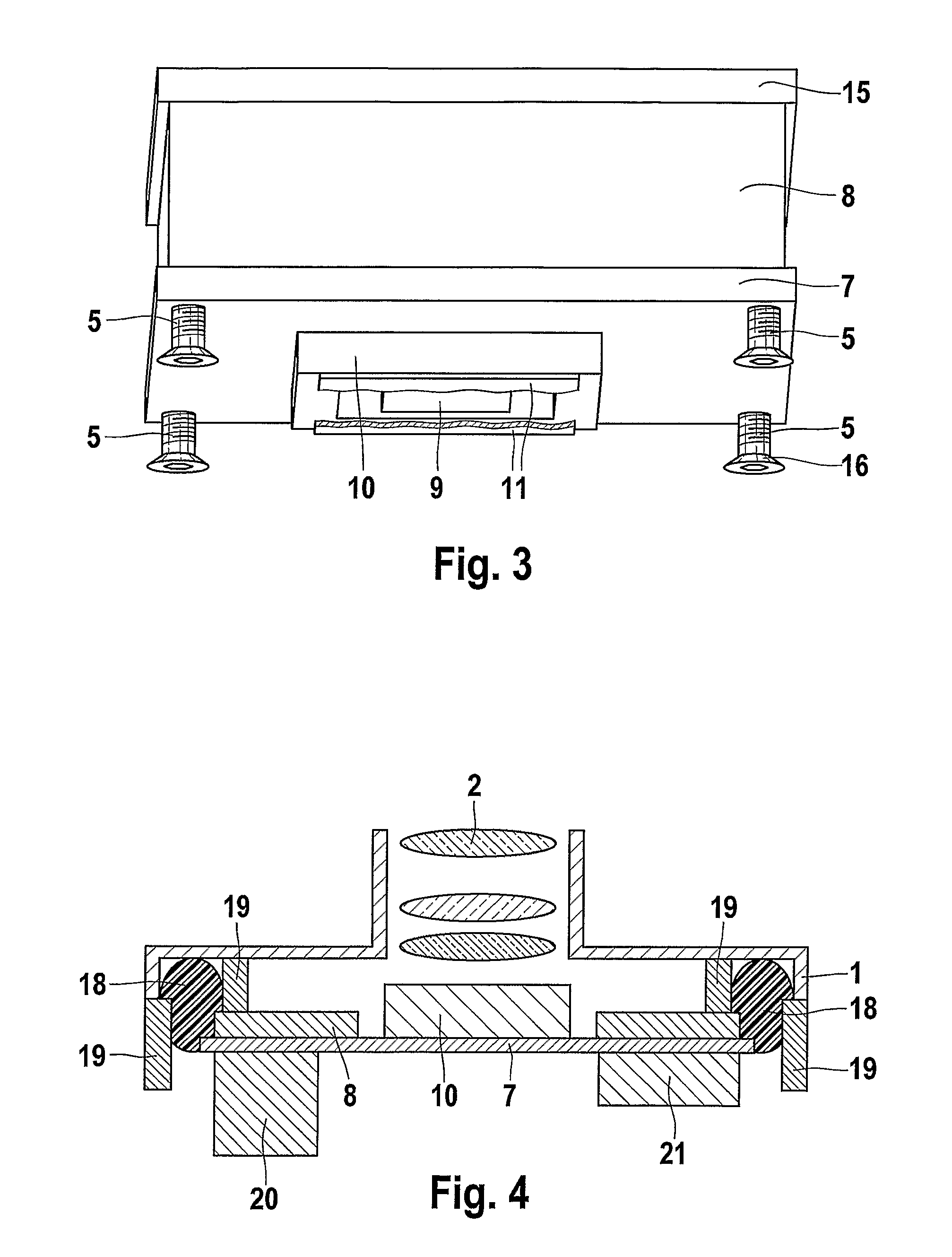Camera
a technology for cameras and interlocking materials, applied in the field of cameras, can solve the problems that the interlocking material remains essentially limited to this container, and achieve the effects of short processing time, high production cost, and rapid hardening of interlocking materials
- Summary
- Abstract
- Description
- Claims
- Application Information
AI Technical Summary
Benefits of technology
Problems solved by technology
Method used
Image
Examples
Embodiment Construction
[0015] A camera, in particular for a motor vehicle, having at least one image converting element is provided. The image converting element includes at least one image sensor and is connected to at least one other element of the camera, e.g., the housing of the camera, by at least one interlock.
[0016] Cameras for automotive use must be very sturdy and at the same time very accurate on the one hand while on the other hand they must be inexpensive. It is conceivable to achieve a high precision through additional design complexity. Possible solutions to this problem include pins, stop edges, or high-precision tolerances. These solutions are associated with increased costs. These costs are necessary for the operation of assembly of the camera to achieve a high precision but are not essential for use of the camera and are simply carried over there.
[0017] In the camera of the preferred exemplary embodiment as described below, an interlocking material is used for joining a circuit board l...
PUM
 Login to View More
Login to View More Abstract
Description
Claims
Application Information
 Login to View More
Login to View More - R&D
- Intellectual Property
- Life Sciences
- Materials
- Tech Scout
- Unparalleled Data Quality
- Higher Quality Content
- 60% Fewer Hallucinations
Browse by: Latest US Patents, China's latest patents, Technical Efficacy Thesaurus, Application Domain, Technology Topic, Popular Technical Reports.
© 2025 PatSnap. All rights reserved.Legal|Privacy policy|Modern Slavery Act Transparency Statement|Sitemap|About US| Contact US: help@patsnap.com



